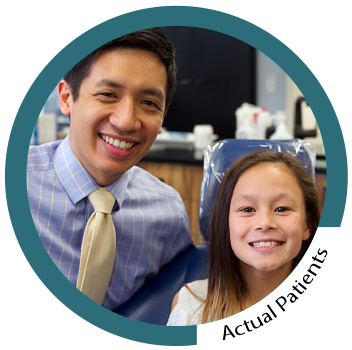The Right Age for Orthodontics
Orthodontics for Children:Having your child evaluated at the appropriate time is critical in detecting developing problems. The American Association of Orthodontists recommends a child have his or her first orthodontic evaluation by age seven. Though seven is generally too young for comprehensive treatment, we do often detect developing problems; this may then allow us to intervene with non-invasive measures which can alleviate and sometimes avoid complex treatment at a later age.
Orthodontics for Teens:
While adolescence is not the only time when treatment can occur, it is perhaps the most ideal and common time to commence treatment. The benefit of orthodontics is immeasurable during these formative years and can instill in a child a strong sense of self-confidence. Furthermore, space can be preserved as the dentition transitions from baby to permanent teeth, sometimes reducing the need to remove permanent teeth. Lastly, the orthodontist can use the growth and development of the teeth and jaws in ways that aren’t possible in non-growing patients. The timing of treatment is critically important, as starting too early results in having braces on unnecessarily long and starting too late can result in missed opportunities.
Orthodontics for Adults:
Adults are different than children and should be treated accordingly. First and foremost, an adult patient should feel comfortable in the office in which he or she is being treated. While the ultimate goal of a beautiful, healthy smile is the same for patients of all ages, the manner in which it is achieved is often quite different. Esthetic options ranging from clear braces and Invisalign to lingual braces (braces that go behind the teeth) are often implemented for those who wish to make their orthodontic experience less conspicuous
What about the Extraction of Teeth?
Though we normally allow for baby teeth to fall out naturally, the removal of these teeth is sometimes recommended to help guide the eruption of permanent teeth into their proper location in the mouth. With respect to the removal of permanent teeth for orthodontic purposes, a multitude of factors contribute to this decision. When indicated, extractions can lead to a more attractive facial profile and a more functional and stable bite relationship. Dr. Leung will only recommend the removal of teeth after a careful evaluation and measurement of certain scientific parameters.











